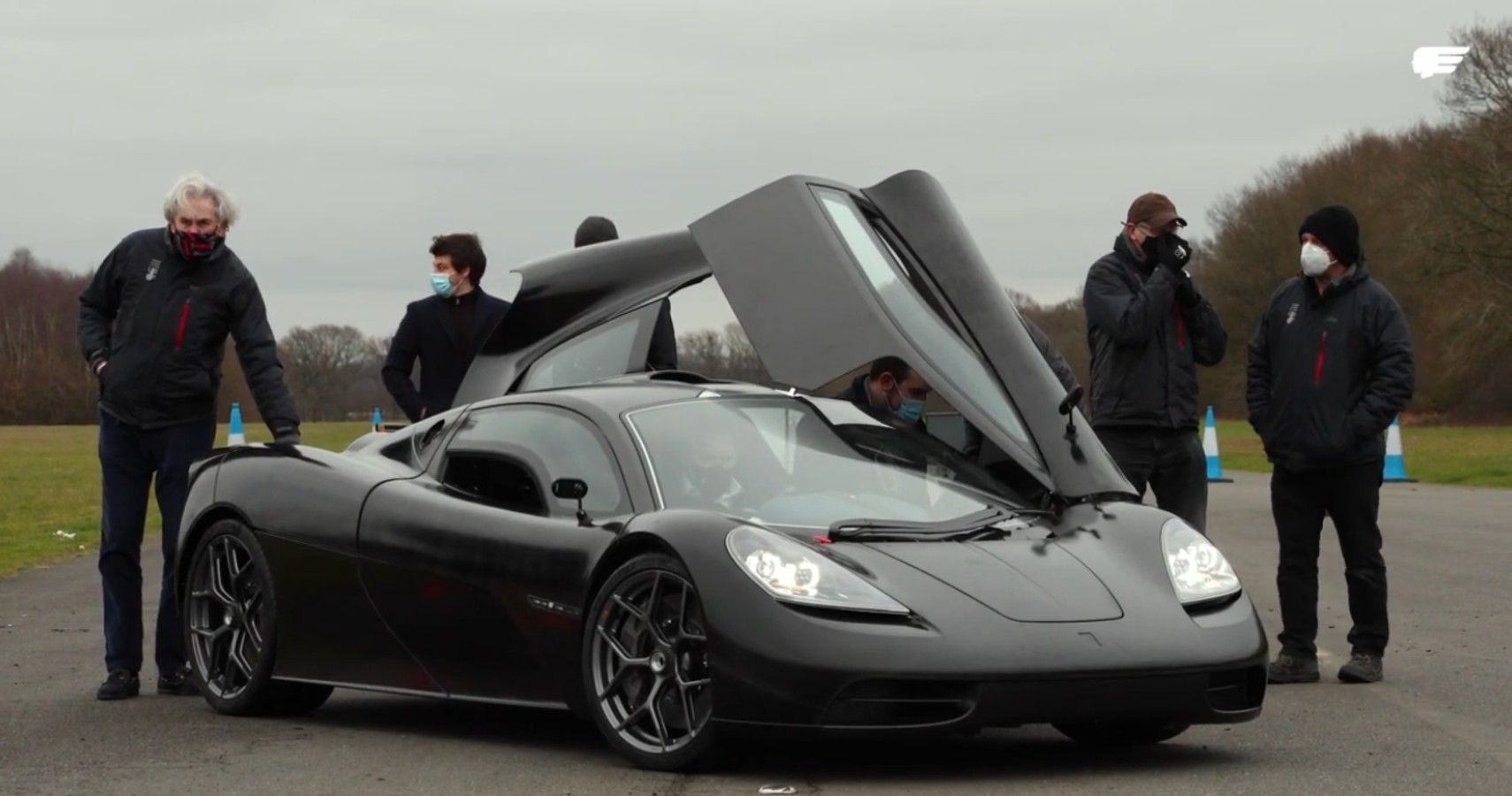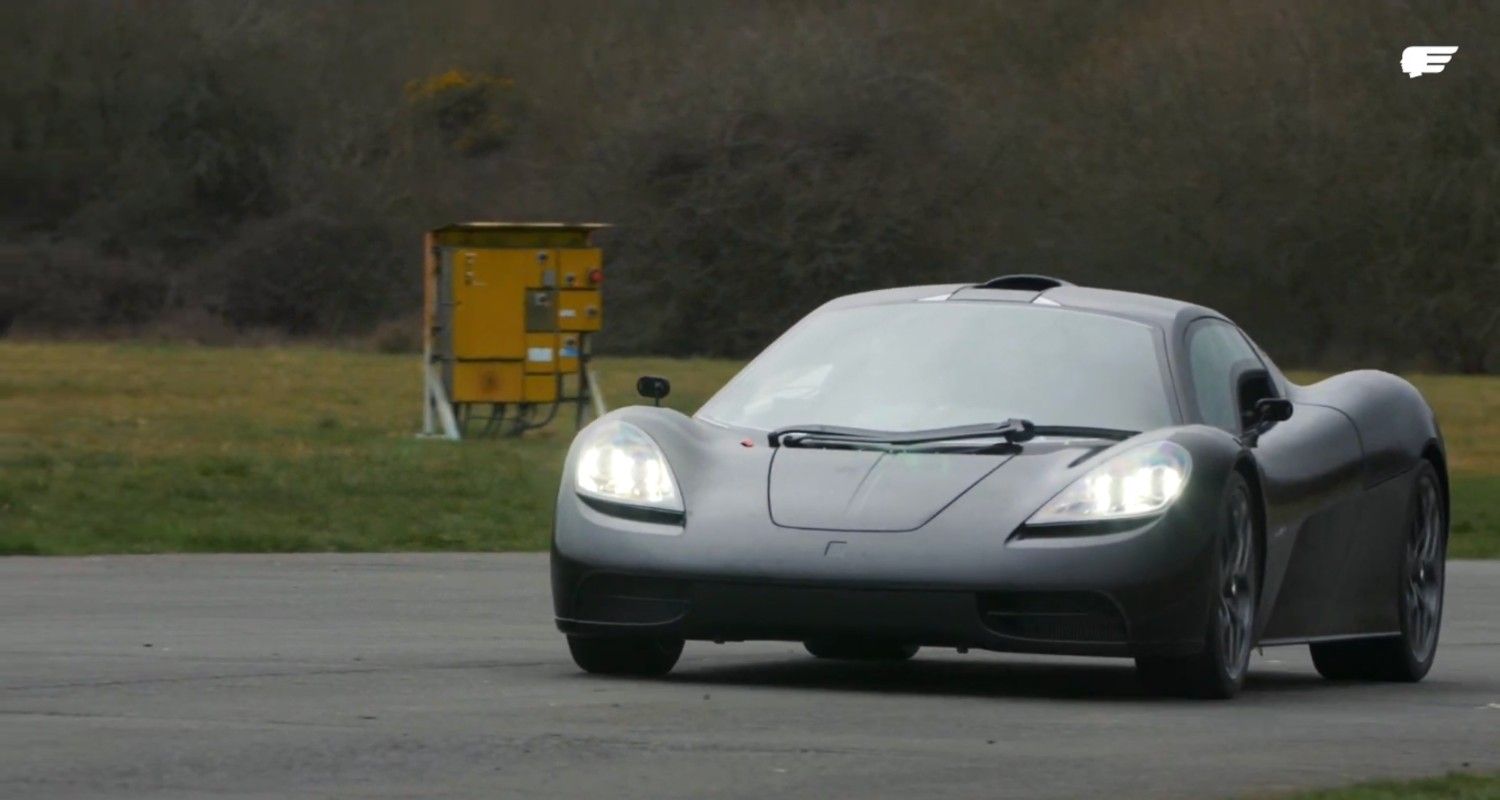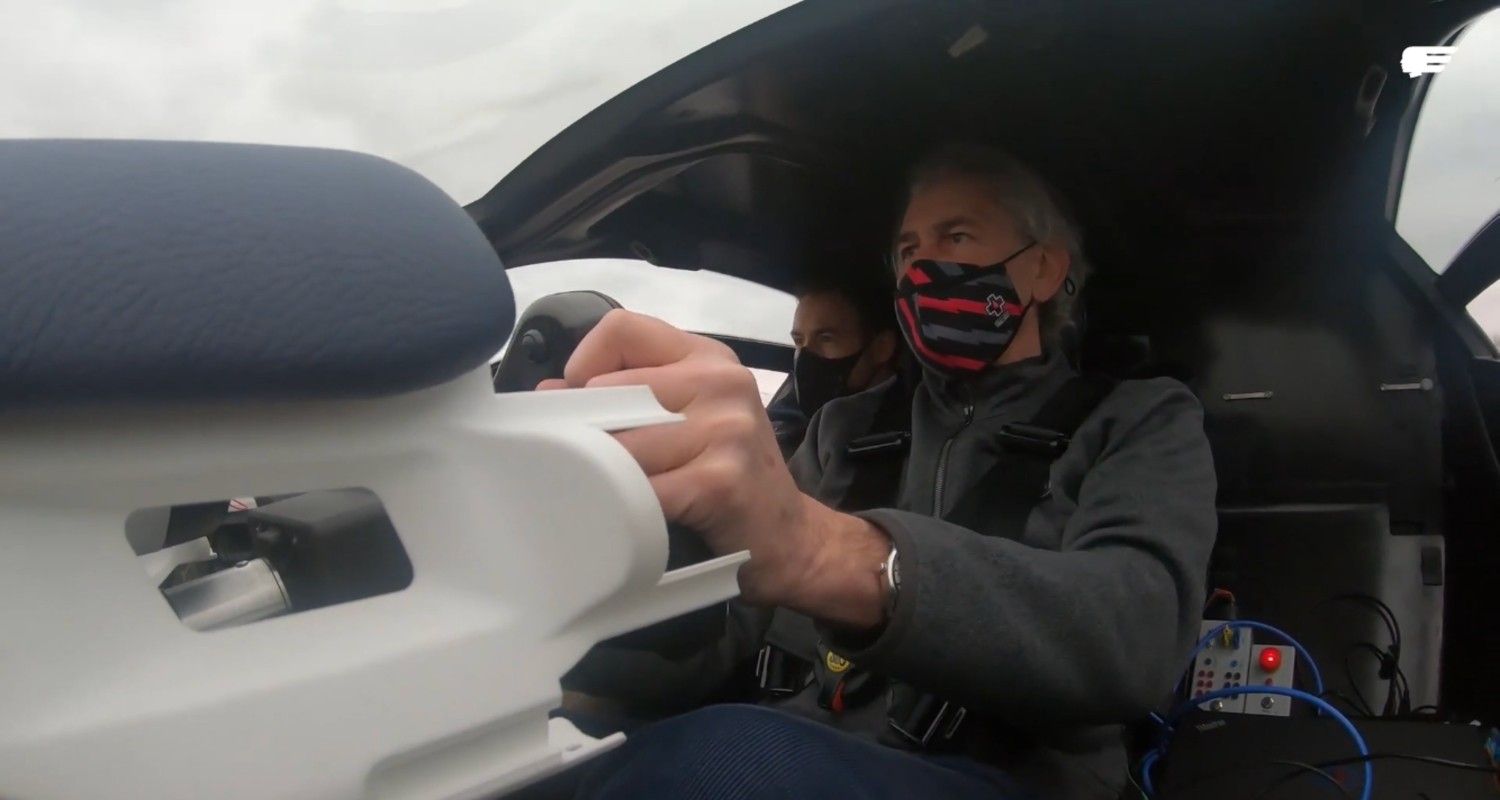With many modern supercars, the focus is mainly on the top speed and styling. However, Gordon Murray's new car goes completely against the grain. The GMT.50 XP2's absolutely miniscule weight figure of 330 pounds for the carbon fiber body and chassis when paired with the racing-derived 12,000-rpm V12 creates a driver-centric car, especially with the middle seat and manual configuration. The car's strikingly similar appearance to the F1 also harks back to the 1990s supercar market where for the most part, cars focused on the experience of the cars instead of top speed.
The T.50 Is A Driver-Focused Supercar
While the T.50 has been seen now multiple times, it had not yet been witnessed going around a track to see how it could feel while moving. In fact, Gordon Murray himself had not yet gotten to drive the car until it was brought to Dunsfold in England for his first drive.
The car sits strikingly against the green landscape around the track when it was unloaded from the trailer for use. The T.50 sits smaller on the tarmac than it looked in it's original release and upon initial startup the low hum of the V12 burbles out across the track.
The T.50 Is Purpose-Built As A Performance Car
After jokingly being told "nothing more than 10,000 rpm this time," Murray set out onto the track himself in the car, accompanied by one of his crew to log data as the car was driven. As the car began it's first lap, the sound of the engine even at only 3,000 rpm sounds purpose-built for performance.
The XP2 setup on this T.50, which stands for experimental prototype 2, looked more than competent around the circuit and behaved as if it were a fully-fledged production vehicle, showing how ready the car is for production.
The T.50 Is The Most Similar Car To The McLaren F1
Going around Dunsfold, Murray looked and sounded impressed with how the T.50 handled the track, even in what appeared to be slightly wet conditions. Because of the weather, he managed to chirp the rear wheels at only 3,000 rpm. The central seating position and manual gearbox layout resulted in the car being one of the better handling and driver-focused vehicles built so far. When he returned to the trailer, Murray said the car felt great around the track and handled beautifully.
Source: YouTube



